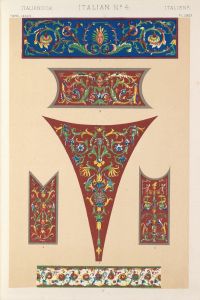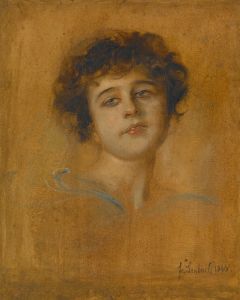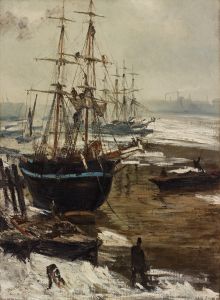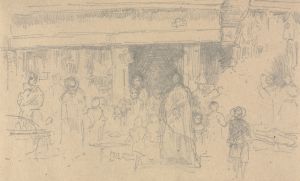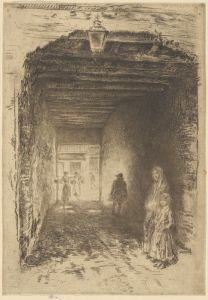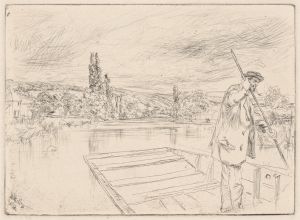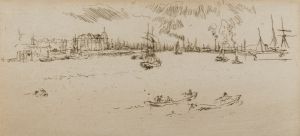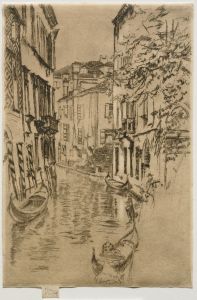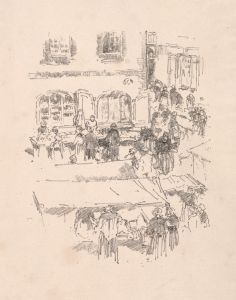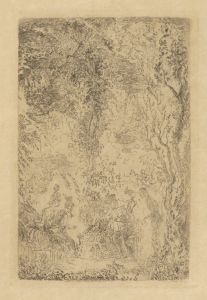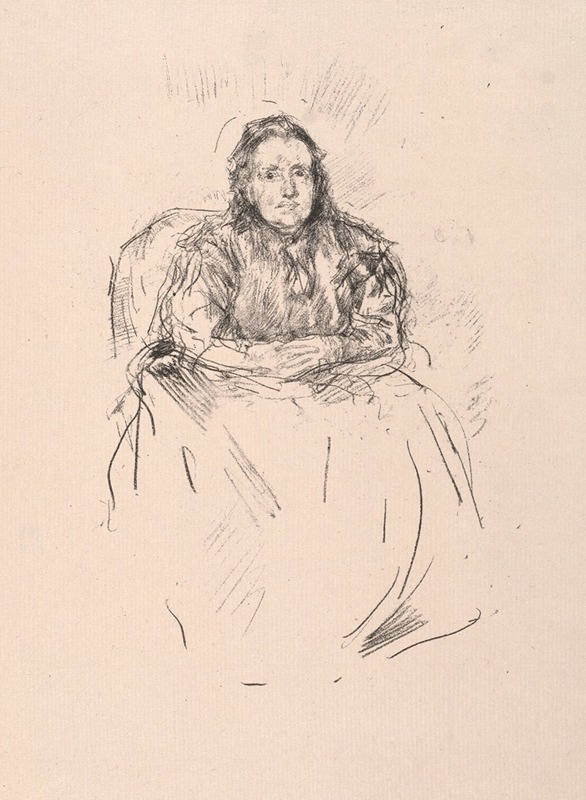
Portrait Study – Mrs. Phillip
A hand-painted replica of James Abbott McNeill Whistler’s masterpiece Portrait Study – Mrs. Phillip, meticulously crafted by professional artists to capture the true essence of the original. Each piece is created with museum-quality canvas and rare mineral pigments, carefully painted by experienced artists with delicate brushstrokes and rich, layered colors to perfectly recreate the texture of the original artwork. Unlike machine-printed reproductions, this hand-painted version brings the painting to life, infused with the artist’s emotions and skill in every stroke. Whether for personal collection or home decoration, it instantly elevates the artistic atmosphere of any space.
"Portrait Study – Mrs. Phillip" is a painting by the American-born, British-based artist James Abbott McNeill Whistler. Whistler, known for his distinctive style and contributions to the Aesthetic Movement, created this work during his prolific career in the 19th century. The painting is a portrait study, which typically means it was intended as a preliminary work or an exploration of the subject rather than a finished, formal portrait.
James Abbott McNeill Whistler was born on July 11, 1834, in Lowell, Massachusetts, and he spent much of his career in Europe, particularly in London. He is best known for his portraiture and his innovative approach to composition and color, which often emphasized mood and atmosphere over detailed realism. Whistler's most famous work is "Arrangement in Grey and Black No. 1," commonly known as "Whistler's Mother."
"Portrait Study – Mrs. Phillip" features a woman identified as Mrs. Phillip. Unfortunately, there is limited information available about the identity of Mrs. Phillip or the specific circumstances under which Whistler painted her. This lack of detailed background is not uncommon for many of Whistler's portrait studies, as they were often created as part of his ongoing exploration of form and technique rather than as commissioned works with extensive documentation.
The painting exemplifies Whistler's characteristic style, which often included a subdued palette and a focus on the harmony of color and composition. Whistler was influenced by the Japanese art that became popular in Europe during the latter half of the 19th century, and this influence can be seen in his use of space and the simplicity of his compositions.
Whistler's approach to portraiture was innovative for his time. He often sought to capture the essence of his subjects with minimalistic detail, focusing instead on the overall impression and emotional resonance of the image. This approach was part of his broader artistic philosophy, which he famously summarized with the phrase "art for art's sake." Whistler believed that the value of art lay in its beauty and aesthetic qualities rather than in its ability to convey a narrative or moral message.
"Portrait Study – Mrs. Phillip" is an example of Whistler's skill in capturing the subtleties of his subjects through careful attention to tone and composition. The painting likely features the delicate brushwork and refined use of color that are hallmarks of Whistler's style. While the specific details about Mrs. Phillip and the context of the painting remain sparse, the work itself stands as a testament to Whistler's enduring influence on the art world.
Whistler's legacy is significant, and his works are held in major collections around the world, including the Louvre in Paris, the Tate Britain in London, and the Smithsonian American Art Museum in Washington, D.C. His contributions to the development of modern art, particularly in the realms of portraiture and the Aesthetic Movement, continue to be celebrated and studied by art historians and enthusiasts alike.
In summary, "Portrait Study – Mrs. Phillip" by James Abbott McNeill Whistler is a notable example of the artist's portrait studies, reflecting his innovative approach to capturing the essence of his subjects through a harmonious balance of color and composition. While specific details about the subject and context of the painting are limited, the work remains an important part of Whistler's artistic legacy.





